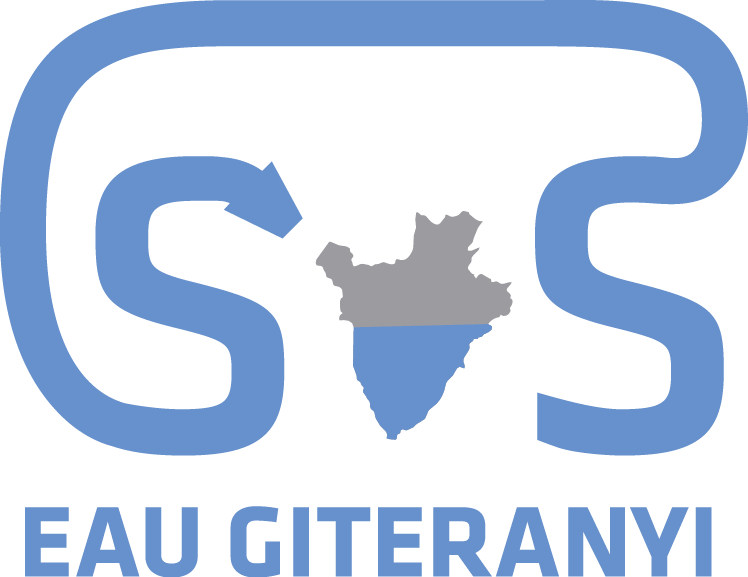Installation of a pump to access the water in the groundwater table:
The technical installation of a water pump as well as the drilling necessary are also more expensive. However, in performing the drilling near the center of Giteranyi, the pipes used in the adduction system are shorter, which reduces the cost for the adduction compared to the adduction from a natural spring.
The main advantage of the water pump is that it takes water from the groundwater table, which at present is unused, thereby increasing the amount of water available to Giteranyi. Moreover, it is capable of supplying water year-round.
It is for these reasons that we chose to install a water pump.
Terrain study for the placement of the pump
As no field studies had been carried out previously in Giteranyi, we called upon experts on site to carry out geological and hydrogeological field investigations during the first phase of the project. For this purpose, we solicited Dr. Charles Bakundukize, Head of the Department of Earth Sciences at the University of Burundi, an expert in this field. The results of the geological, hydrogeological and geophysical investigations carried out in the village of Giteranyi and its immediate surroundings, as well as the visits of the sources of emerging water that can be captured to supply drinking water to the village of Giteranyi and its surroundings, allow us to draw the following conclusions:
- The centre of Giteranyi is located at an altitude of more than 1600 m above sea level and on a terrain geologically made up of Precambrian crystalline rocks including siltites, quartzites, psammites and conglomerates. The carried out geophysical drill holes show high apparent resistivity values reflecting these different lithologies and offer no possibility of finding groundwater at the top of this ridge.
- On the other hand, 2 km east of the village of Giteranyi, the village of Rusasa-Bisiga in the Gasenyi sector is located in a valley. There the geophysical drillings indicate the presence of the groundwater table at depths between 40 and 60 m. The boreholes we actually drilled there show the possibility of reaching groundwater at a much shallower depth (less than 30 m). In order to have a sufficient water column, final boreholes should be drilled to a depth of up to 100 m.
Realization of an exploratory drilling
With Dr. Bakundukize, an exploratory drilling took place in July 2019. The drilling was performed by the local firm ROBUCO. The borehole extended to approximately 80 m depth.
After the installation of the temporary pipes, we observed water arriving at an estimated 40 m³/h. The productivity of the drilling site was tested during a trial with a pump having a capacity of 16 m³/h. After taking measures for four hours, the water level stabilized at 26.2 m depth. It therefore appears as though the aquifer has a productivity well above the capacity of the pump, as was observed during the drilling.
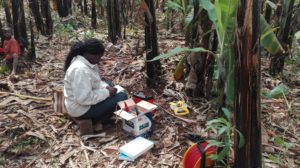
Potability of the water
Following the completion of the exploratory drilling, it was essential to inspect the quality of the water and verify its potability. To confirm that the water is potable, two different analyses were performed: a bacteriological analysis, which has to take place at most three days after taking the sample, and a chemical analysis.
Concerning the biological analysis, it was done during the installation of the permanent system. The result indicated the necessity of treating the water, which will be easy to implement.
The chemical analysis was performed by the Zurich-based lab Veritas AG. This lab informed us of the quantity of multiple heavy metals and other important elements on the basis of standards from the WHO. The final results of the chemical analysis confirmed the potability of the water in the aquifer.
Permanent installation system
Concrete conditions
- Population to serve: The inhabitants of the center of Giteranyi and the inhabitants of Gasenyi (in total ca. 2,700 households).
- Daily volume of potable water to pump: Given that the quantity of water is limited, the water will only be for drinking, cooking, and washing the face. We are counting 20 liters per household per day. For 2,700 households it is therefore necessary to pump 54 m³ of water per day.
- Pump: Given the great depth from which the pump must bring water, it is not possible to install a manual pump. We therefore need an electric pump.
- Available energy: Giteranyi is not supplied with electricity. However, we can count on solar energy, which can produce 4.5 kWh/m² per day during the rainy season in which there is less sun. During the dry season, when more water is required, more energy can be provided by photovoltaic panels.
Chosen system: Solar Photovoltaic Water Pumping System
A solar photovoltaic water pumping system is an eco-friendly and autonomous solution for water supply, particularly well-suited for rural areas without access to the electricity grid. It uses solar energy, captured by solar panels, to power pumps that extract water from a deep well and deliver it to inhabited areas.
Engineer Giulia Giacomini developed a technical solution tailored to our project, under the direction of Anna Renda and Xavière Sinaraha. The system operates in two stages:
- A first solar-powered pump extracts water from the aquifer (at a depth of 72 meters) and transfers it to a 50 m³ storage tank located near the borehole.
- A second pump, powered by a separate group of solar panels, then pushes the water to a main reservoir of 100 m³ located at a higher elevation (over 260 meters above) allowing for gravity-based distribution to the village’s water points.
The entire system is completely off-grid, meaning it operates solely on solar energy. It includes:
- Solar panels (up to 42 kWp of capacity)
- Inverters to convert the generated electricity
- High-performance submersible pumps
- Storage reservoirs
- A gravity-fed distribution network
This system can supply up to 100,000 liters of drinking water per day, significantly improving access to clean water for the residents of Giteranyi.
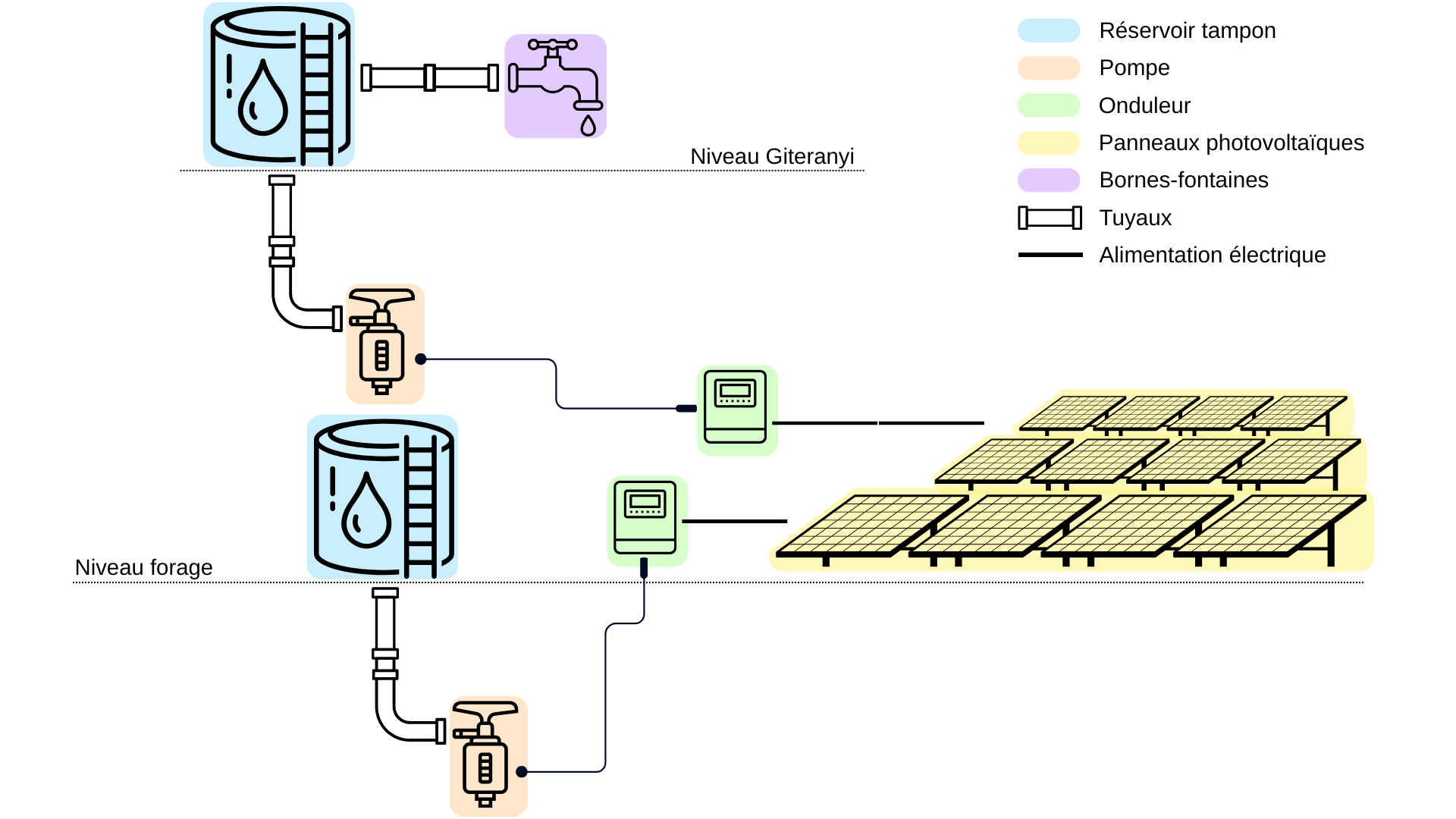
Maintenance
The system requires maintenance of the pumping site, the reservoirs, and the network in general. It is necessary to:
- periodically clean the solar panels
- note the daily water consumption
- replace the faucets and the sluice gates as often as necessary
Other options considered for the provision of water
- Rainwater collection system:
This is the least expensive option, but rainwater is only available during the rainy season. During the dry season, when the lack of water is most pronounced, a rainwater collection system is incapable of fulfilling the need for water.
- Adduction of water from a natural spring:
The adduction of water from one of the natural springs situated 5 km from the center of Giteranyi is possible, but the cost is higher due to the required length of the pipes, the necessity to construct several intermediate points of water to serve the villages crossed by the adduction network, as well as the energy necessary to carry the water toward its destination (the center of Giteranyi). Moreover, in taking water from a spring, the spring would be less accessible for the local inhabitants. A simple adduction system doesn’t increase the quantity of water available, but just redistributes it.
Management of the water
The quantity of water available per day is subject to the capacity of the installed reservoir. The reservoir is filled during the hours in which there is sun thanks to solar energy. Because of this limitation, it is necessary to have a proportional distribution of water and ensure responsible and equitable consumption of the water.
The proposed management system will be printed voucher cards as seen on the model below. Each jerrycan of 20 litres represents the nominal quantity of water. The person that gets the water will go to the fountain desk with the voucher card and the person responsible will hole-punch the an image of the jerrycan corresponding to the filled jerrycan.
- For families composed of maximum 5 people, the voucher cards will have 8 jerrycans (1 per day + 1 free per week). The voucher card will also allow for the purchase of 20 litres per household per day and 20 additional litres per week.
- For larger families with more than 5 people, there will be voucher cards with 10 jerrycans (1 per day +3 free per week). Larger households will also have the right to purchase 20 liters per day and up to 60 supplementary litres per week.
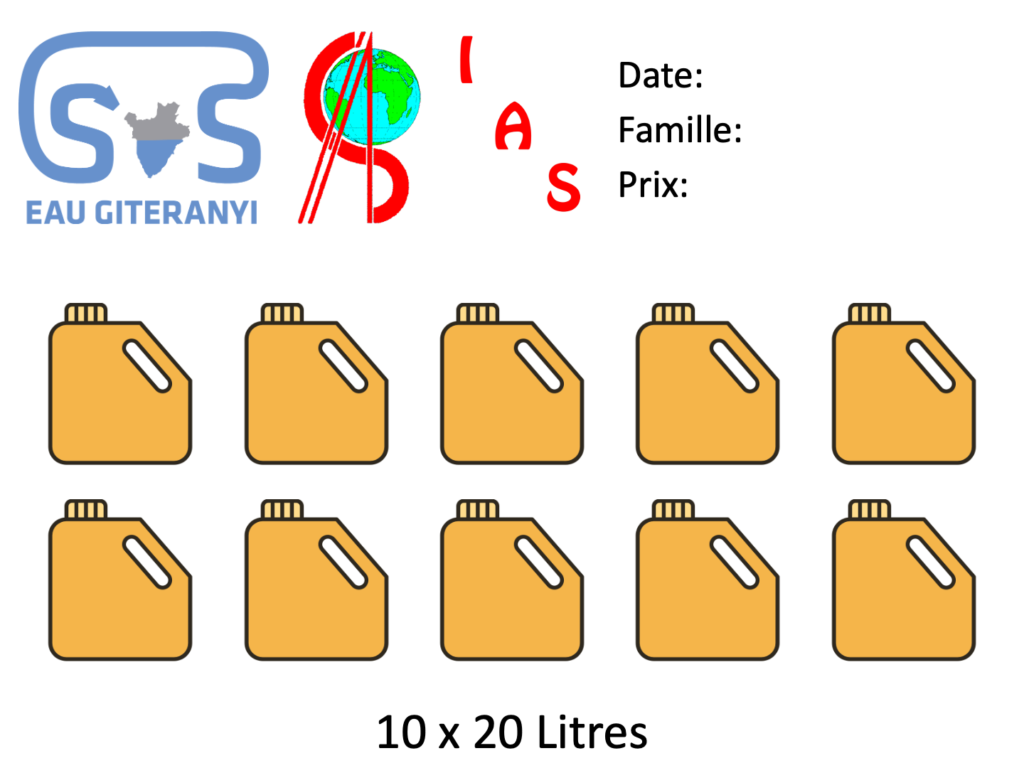
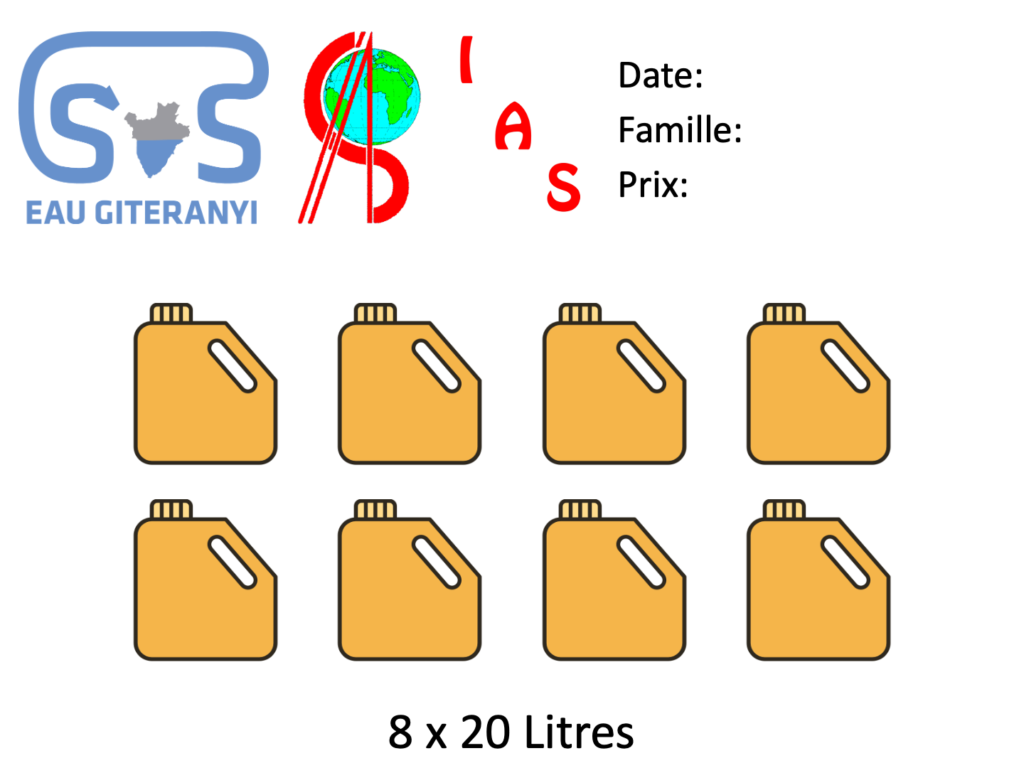
Each family will have the right to purchase one voucher card per week, and the price of both proposed voucher cards will be identical. The voucher cards will be sold by the responsible office (the Water Management Committee or the town hall) and the Commune will have to apply specific rules, such as noting the money paid and the number of voucher cards sold to each family at the moment of sale.
In addition, the Commune needs to ensure access to water for the most poor. That’s the reason for why access to water in exchange for cash payments is ideal, or the possibility to assign public service works for those who will need a subsidy for the purchase of voucher cards.
